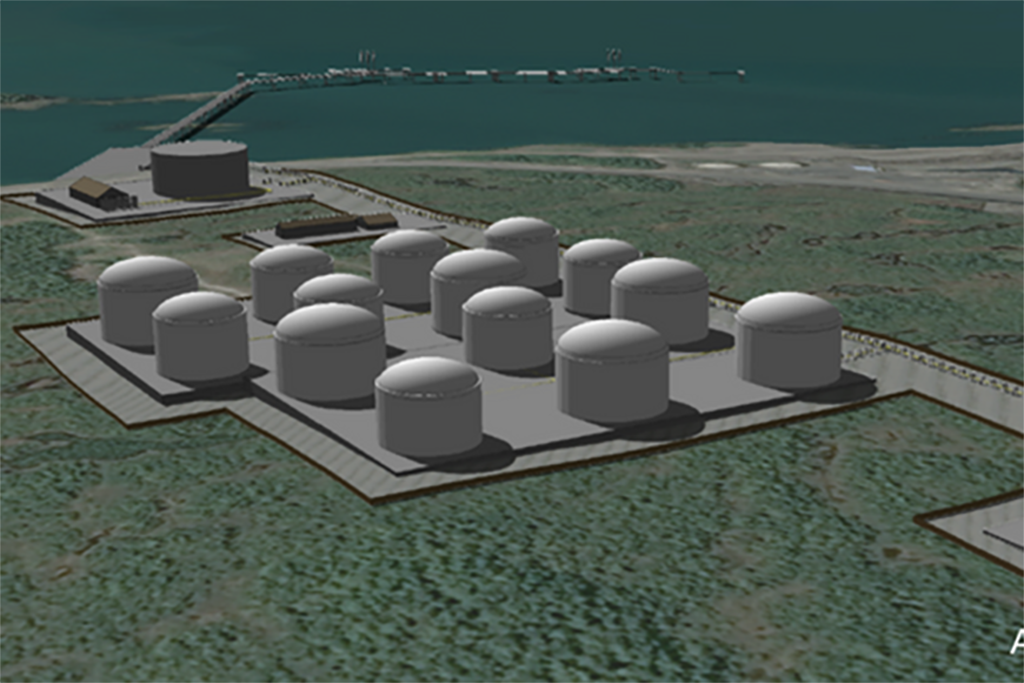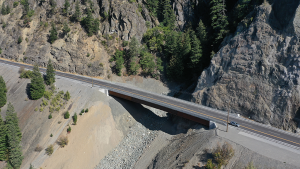PRINCE RUPERT, B.C. – The Province of B.C. has granted an environmental assessment certificate to Vopak Development Canada Inc. for the proposed Vopak Pacific Canada Project.
The project is a proposed new bulk storage facility for liquified petroleum gas, methanol, light diesel and/or gasoline on Ridley Island in the territories of Gitga’at, Gitxaała, Kitselas, Kitsumkalum, Metlakatla and Lax Kw’alaams Nations.
Plans include unloading platforms for bulk liquid gas transported to the facility on the existing rail loop on Ridley Island and docking berths on a new offshore jetty for exporting liquid gas.
Liquid gas products would be transported to the facility from across Western Canada via existing Canadian National railway lines.
Vopak estimates direct expenditures during construction would total $885 million over two years, with approximately 250 full-time equivalent jobs within B.C., 70 of them local to the site.
The facility would be built on federal lands. The provincial environmental assessment certificate contains required conditions regarding matters within provincial jurisdiction, should the federal government determine the project can proceed.
The provincial certificate with conditions was issued following a decision by George Heyman, B.C.’s minister of environment and Climate Change Strategy, and Bruce Ralston, B.C’s minister of energy.
According to the province, the ministers considered the Environmental Assessment Office’s report and the chief executive assessment officer’s recommendation to issue a certificate when they made their decision. They also considered consultation and reviews by First Nations, input from public engagement and submissions from non-governmental organizations. In addition, ongoing federal approvals still required for the project to proceed and areas of primary federal and provincial jurisdiction were considered.
The project is required to meet specific conditions and design parameters under the environmental assessment certificate, if it moves ahead. The ministers have determined with the certificate’s requirements, significant adverse effects are unlikely to occur with regard to areas under provincial jurisdiction.
The legally binding conditions of the certificate include:
- developing a greenhouse gas emissions reduction plan;
- working with the local community and First Nations to address potential adverse effects on community services, infrastructure and well-being; and
- participating in initiatives at the request of the province to manage potential cumulative effects of this and other projects in the area.
The province noted many of the concerns raised by First Nations and the public during consultation and engagement fall under federal jurisdiction, such as rail transport and marine shipping.
The ministers have written federal regulators recommending concerns regarding the impacts of potential spills and increased rail and marine traffic be addressed in the parallel federal review process currently underway, or through other government actions.
A range of mitigation measures have been proposed by federal regulators to address impacts of the project.
These cover air quality, greenhouse gas emissions, noise, visual quality and ambient light, marine and land resources, soils and terrain, freshwater fish and fish habitat, marine use and navigation, heritage and archeology, and human health.











Recent Comments
comments for this post are closed